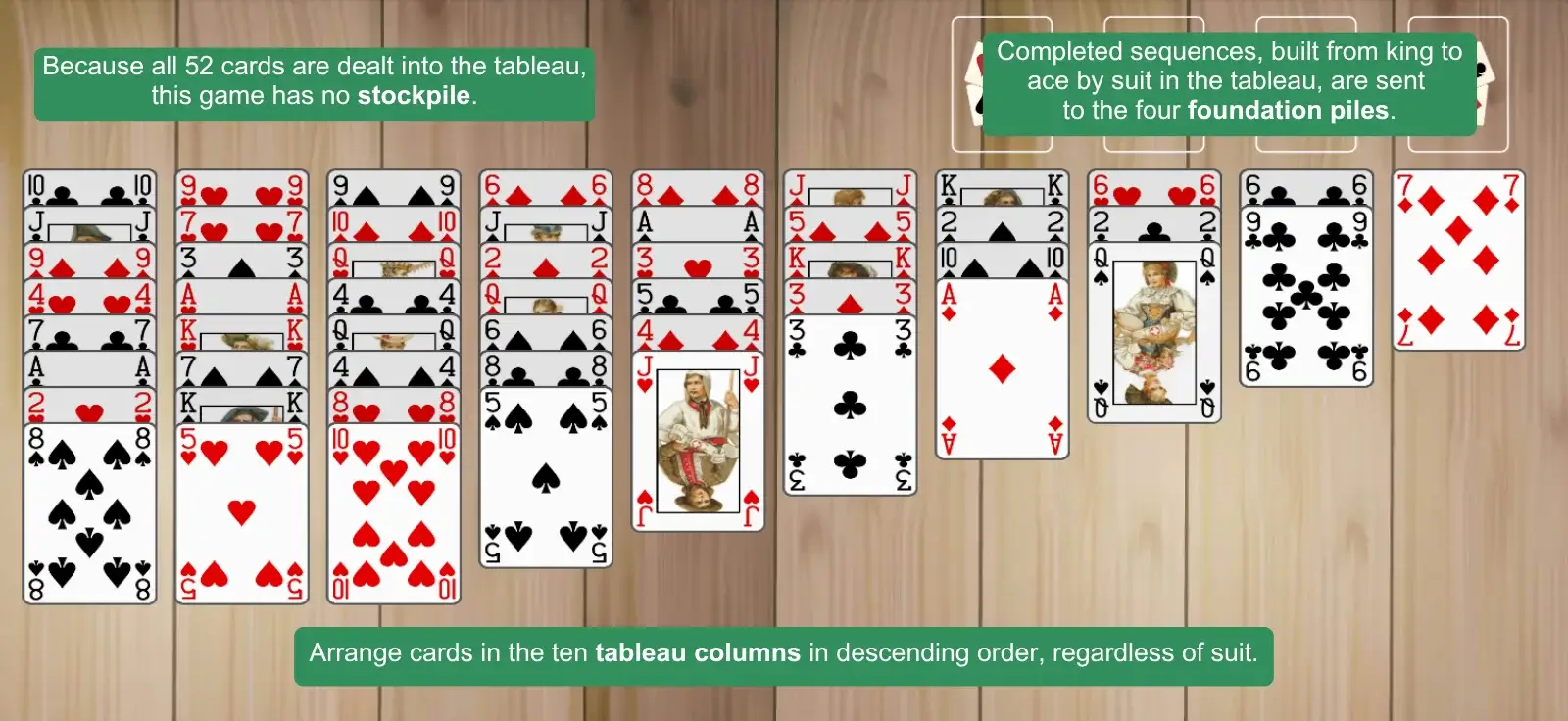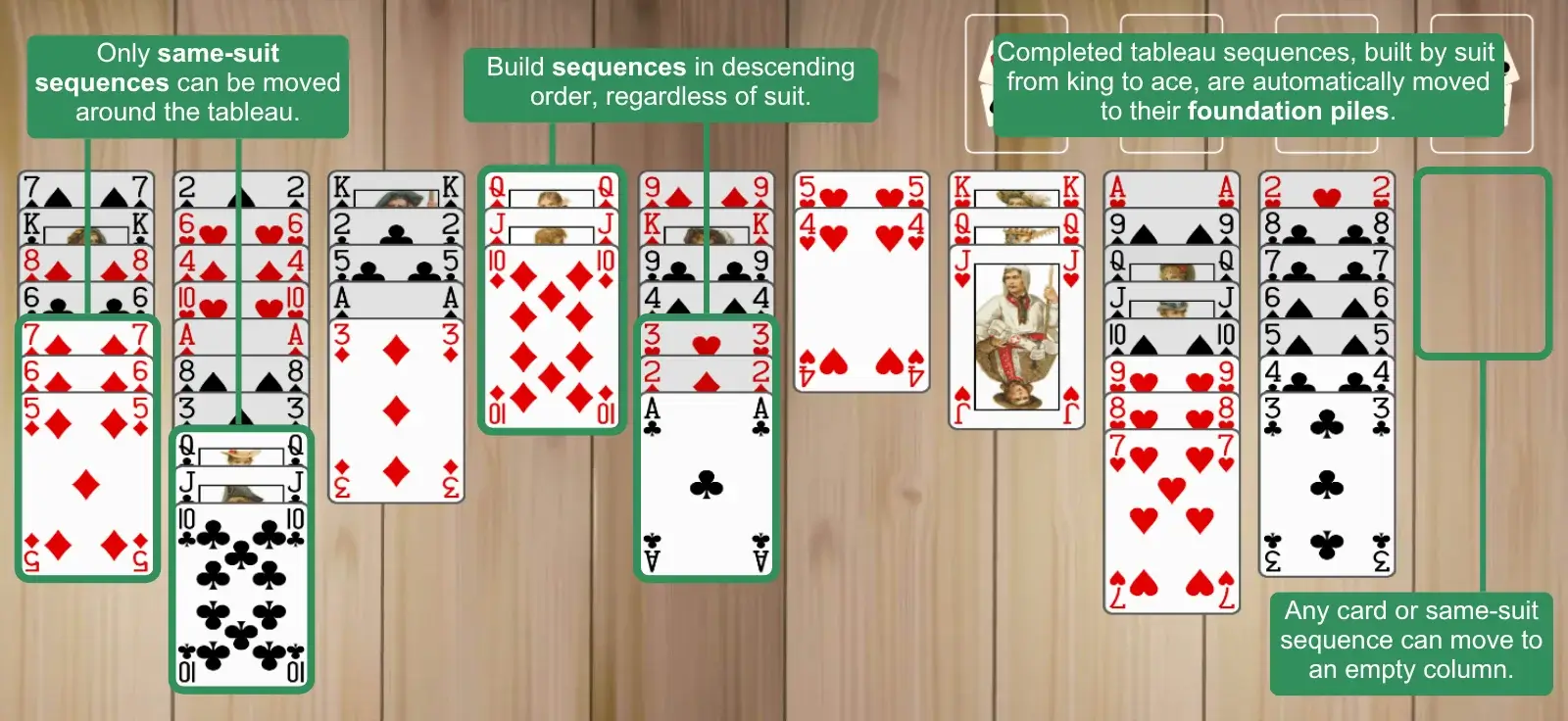Simple Simon Objective
The goal of Simple Simon is to build a descending sequence of cards for each suit, from king to ace, which are
then sent to their foundation piles.
Simple Simon Setup
Simple Simon uses one 52-card deck and is laid out in two main areas:
-
Tableau: The tableau consists of all 52 cards dealt face up into ten columns, which you sequence in
descending order. The first three columns have eight cards, and each column after that reduces by one. So
the fourth column has seven cards, the fifth has six, and so on until the last column has just one.
-
Foundation piles: Four foundation piles are located above the top-right area of the tableau. Each
foundation pile must begin with an ace and build in ascending order until it ends with a king. Completing
all four foundation piles means you win the game.

Simple Simon Rules
-
Sequence cards in descending order. Cards in the tableau must be arranged in descending order,
regardless of suit.
-
You can only move single cards or suited sequences. Any single card at the bottom of each column can
be moved on the tableau. However, although you can arrange mixed-suit sequences of cards, only same-suit
sequences can be moved on the tableau. So a 7♥, 6♠, 5♦ sequence can’t be moved, but a 7♣, 6♣, 5♣
sequence can.
-
Any card or same-suit sequence can move into an empty column. Single cards of any rank and same-suit
descending sequences of any length can be moved into empty columns.
-
Completed sequences in the tableau are sent to their foundation piles. After you complete a
king-to-ace sequence of a single suit in the tableau, that completed sequence is automatically moved to its
foundation pile.

Simple Simon Strategies
-
Survey the tableau to plan your moves. Because this game has no hidden cards, you can scan the
tableau and plan the best path for arranging the cards.
-
Focus on emptying columns. Moving cards out of a column gives you an empty spot for arranging cards,
increasing your ability to move cards around the tableau. But empty columns that will help move the game
forward. Emptying columns of cards that don’t build sequences, especially same-suit sequences, can block
moves in other columns.
-
Prioritize same-suit sequences. Because you can only move sequences that are the same suit,
mixed-suit sequences simply block your access to cards further up the column. So focus on creating as many
same-suit sequences as possible.
-
Build short mixed-suit sequences. You will have to utilize mixed-suit sequences when arranging cards
in the tableau, but try to build shorter ones, no more than three or four cards, so that you can undo them
easily.
-
Use an empty column for mixed-suit sequences. If you dedicate an empty column or two to mixed-suit
sequences, you can use those as temporary placeholders for cards. That way, you can move cards out of the
way and back into play when you need them.
If you find Simple Simon, a Spider Solitaire variation, too easy, you can level up to
Spider Solitaire 4 Suits, or scale it back
to Spider Solitaire 2 Suits if you need
something easier. Play them all for free on Solitaire Bliss!




